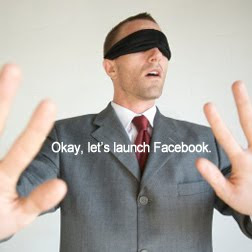 Chris Kieff is a pretty bright guy. In his interview about Ripple6, he mentions how he helps companies realize their marketing and business goals through social media. Smart stuff in one line.
Chris Kieff is a pretty bright guy. In his interview about Ripple6, he mentions how he helps companies realize their marketing and business goals through social media. Smart stuff in one line.Less likable was his recent thinking about social media experts and his reaction to the criticism and praise revolving around them. The primary reason is because it feeds the delusion that social media is a numbers game.
Social media is not a numbers game. At least, it won't be forever.
Ike Pigott once framed it up as it relates to duality and juxtaposition. It was one of my favorite posts that he wrote this year, but the discrepancy goes deeper.
Social media for business is less about getting numbers and more about finding the right numbers. The potential reach is not the entire online population but rather a fraction of the entire population, plus about 5 to 10 percent and minus competitor loyalists. And, at the same time, you have to maintain one-on-one relationships with whatever numbers there might be.
In other words, some companies can thrive with the tiniest of online networks. Others will die despite massive popular appeal.
It has been this way for hundreds and thousands of years. And I suspect it will be this way for hundreds and thousands more. Popularity is no indication of talent or expertise or sustainability. It's often an indication of someone resonating with the status quo, before someone else with an innovative idea topples them off the top with a better way or better gauge or better whatever.
Wilde. Shakespeare. Ford. Beethoven. Cervenka. Warhol. Einstein. Tesla. Lennon. Jobs. Hurley. Lombardi. Socrates. While many of us know these names as influential, none of them seemed all that influential before their influence had already made an impact. And mentioning this could be important to the conversation given that the most influential "social media expert" (if there is such a thing) could very well likely be someone who has 100 Twitter followers today, or, more than likely, hasn't even been born yet.
Companies might keep this in mind while they attempt to overlay metrics onto their decision-making process. While metrics can certainly help us get the job done, they can be equally misleading. While Kieff has a point that it is fair to expect that a so-called social media expert might be expected to participate in the platforms they profess to know, basing decisions on scoring dismisses the varied unseen approaches to this space.
There are plenty of communicators who keep their Facebook pages mostly personal. There are plenty of communicators who invest more personal time on other channels than Twitter. There are plenty of people who never bothered to join a ranking list or algorithm. And so on and so forth. Not to mention, simply participating in all of them doesn't make you an expert, even if it may give you a better understanding.
Searching for someone who understands social media.
Such a decision never starts with a short list of vendors based on nothing more than modern trophies. It starts with understanding the objectives of your business and then finding someone who can help you realize those marketing and business goals using social media or, perhaps, a much broader perspective, making social media a portion of your overall communication strategy.
Sure, I know nobody likes hearing that the answer isn't some short list of criteria. But if anybody wants to be honest, there really isn't any magic formula. If you want a sustainable social media program, all you really need are the people who will match what your company can offer to the people who are already looking for it.
Some of the most prominent and most successful social media programs today did not start with a social media expert (and some did). That alone makes the compelling case that it's not a numbers game. It's about results.
A few related posts you might find enjoyable.
• Down With the Teflon Revolutionaries.
• 9 Points On Why I’m Not a Social Media Expert.
• Let’s “De-Friend” All Self-Proclaimed Social Media Experts!






































